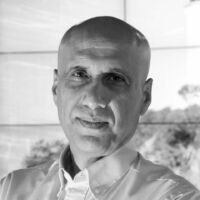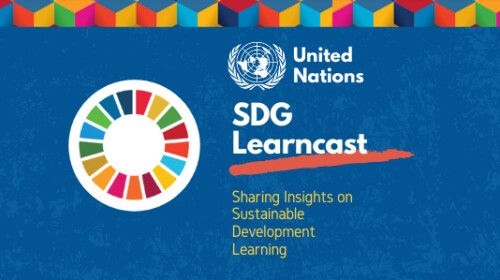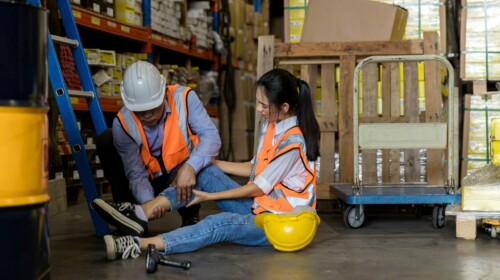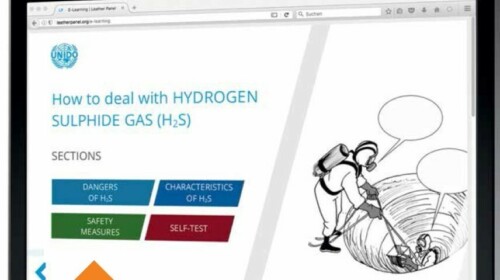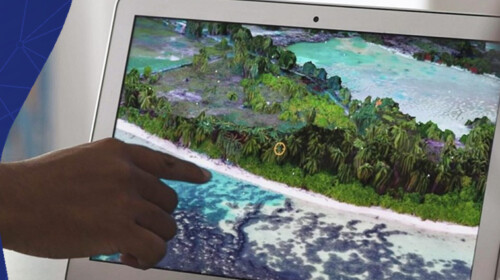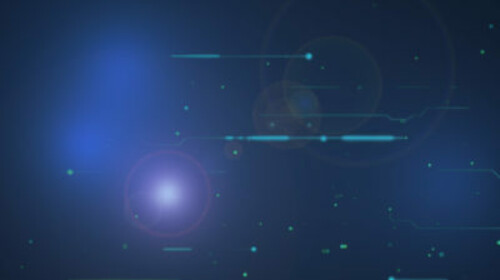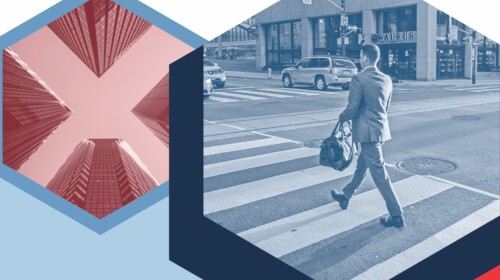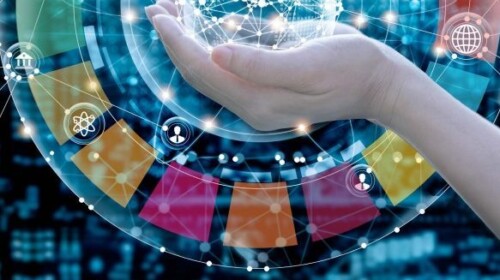In this episode, SDG Learncast asks Professor Sohail Inayatullah, UNESCO Inaugural Chair for Future Studies, what can we learn from futurists and how do future studies help governments formulate and implement policies on sustainable development. As we try to build a sustainable future, Professor Sohail talks about how double-loop learning can help decision-makers effectively learn and how we can use the future to transform today.
You can find SDG Learncast on your favorite podcast app.
[Transcript of the podcast]
SDG Learncast: Episode 1: The role of futurists in achieving sustainable development
Paulyn Duman: Welcome to the SDGLearnCast with me Paulyn Duman.
In every episode, I bring you insightful conversations around the subject of sustainable development and learning, helping us all to achieve a sustainable future.
This time on the SDGLearnCast, it is a really important subject on the role of futurists in achieving sustainable development, with my guest Professor Sohail Inayatullah.
Professor Sohail is one of the most qualified people to talk about the subject future of learning as he was awarded the first UNESCO Chair in Future Studies in 2016. He was also awarded the Laurel award for all-time best futurist by the Shaping Tomorrow Foresight Network.
But what is a futurist?
Sohail Inayatullah: So foresight futures literacy goes from imagining the impossible and they started to create what we truly wish for and finding ways to make that vision real.
Paulyn Duman: Coming up, we will hear about Professor Sohail talk about the job of futurists, how he used future studies to support government policies, plus we hear about practical tools and tips futurists use to transform today. In this episode, Professor Sohail will also tell us more about how decision-makers can effectively learn.
Let’s start with how a futurist’s day looks like.
Sohail Inayatullah: My day pre-COVID-19 would have been running futures workshops. They tended to be one or two or three days, and the main goal for many organizations was they had an issue they couldn’t resolve. Either there were many differences in the organization. They were uncertain about their direction. They need to manage complex information. Then you have to set a long-term and grand vision. So as a futurist, we would help them do that. What people like about futures thinking is it is structured. It’s a very simple process. Since COVID-19, I do the same work, but they tend to be shorter, 90 minutes or a few hours, taking groups through a clear-cut process on creating alternative and preferred futures.
So, for example, when I started out with the group, we first asked: what’s unimaginable today but if it becomes possible, changes everything for your organization that gets people in a visionary mode? Then we start to inquire into what’s the use future, what’s the institutional practice that’s not working, that needs to be transformed? [Is it] always going to the office or working five days a week or [working in] silos?
From there, we try to move towards emerging issues analysis. What’s coming down the road? 3D printing, seller agriculture, using artificial intelligence to anticipate mental illness, suicide; the predictive city, blockchain? Once we’ve done that, then we ask ourselves, what are the implications of one of these issues?
Paulyn Duman: Professor Sohail worked with the government of New Zealand where the Prime Minister said that her government is going to prioritized people’s well-being. How does a futurist help in implementing this policy?
Sohail Inayatullah: Recently I started working with the government of New Zealand and they were framing their issues of the future of infrastructure, but very clearly they understood it, it wasn’t just about infrastructure, it wasn’t just about always being behind, of infrastructure is always catching up. And it wasn’t just about the smart crew, or green, or more participatory infrastructure.
It was truly seeing as the nation switches from GDP to wellbeing, what are the implications for infrastructure? How does the nation itself become more futures-oriented futures-generation-oriented? How does it use the metaphors from local Maori culture to actually address and make the process far more powerful and potent?
So this we’re seeing: if we’re making the shift to wellbeing, what are the implications for infrastructure? What do we need to do in 2020? Because their vision statement was 2050, 20, 70. Understanding this is a 30-year shift. So it was about physical wellbeing, but social wellbeing. It was to reimagine New Zealand Aotearoa going forward into the future.
So our work is with nation-states, international organizations, also individuals. One of my most enjoyable processes was, I was in one city and about 10 parents said, can you help our kids? So I took 7 to 10, 12 to 15-year-olds through a process of thinking through their future. And the first thing I asked them, what’s your vision for 2025? And one said she wants to be a development worker, to save the world. Another said, well, she wants to be a CEO of a tea company by 25. So I said, great. If that’s your vision of your future, that’s where you wish to be in 10 years. What’s the metaphor of your life today?
And this became a bit stressful, but as she explored this, she said, “Aha”! My metaphor is the blinds were always down. And then her friends were quite touched and hugged her and there were some tears and they said, yeah, you don’t connect with us. And then we said, well, what’s your better metaphor if you wish to be a CEO. And she said, “Aha! let the sunshine in!” So we go down from story to practicality. What is the new practice? The new practice became not just excelling at science and math but also learning emotional skills, spiritual skills, mindful skills. And of course, most importantly connecting with all of her friends that in fact, becoming a CEO is a community effort, it’s not just one person. So this is a very powerful future is not just for nations of the planet, but also individuals on a journey.
Paulyn Duman: But I feel that sometimes relevant information is shared with people and that there is an imperative to change, but we don’t seem to learn. Do you have examples of how people and more importantly, decision-makers, effectively learn?
Sohail Inayatullah: So even if you give this information out to groups, people go into what’s called zero loop learning. The information is given, here’s what we need to shift. Change industrial factory farming create buffer zones between cities and wildlife, stop wet markets, or whatever other suggestions you have. But decision-makers, you give the information, they don’t hear the information, they have their own perspective, or they’re too caught in the present. Or they’re working from trauma and caught in the past. So in zero-loop learning, the information a futurist might give to a prime minister, a decision-maker a parent is not heard.
Option two, we’d try to move to single-loop learning, which is great. Give me the information [and] let me act. Now the challenge with this approach to work is that the rate of change is exponential and there are different views about reality. So it’s heterogeneous perspectives. Thus, merely acting doesn’t always lead to an optimized solution.
And thus for us, the most important thing is double-loop learning. This is learning to learn. Challenging the process, challenging the product, and also learning about self. So double-loop learning, we try to then understand what are our assumptions about the future that need to be challenged. With one international organization, we were focused on, in this case, insurance. And so they, we’re focused on safety and security, which made sense around the trucking industry. As we did this process and challenge the assumption is that aha! For the future, what’s most important for safety and security is bioinformatics, not just safer trucks, but finding ways to get information from the truck driver on their health. So this starts this shift towards a new possible future for them.
With another country, we started to look at the future of aviation and they shifted from landing rights to, of course, retail, to seeing aviation in itself as a learning industry. What is 3D printed avionics or creating a living lab? And in this country, they actually got $50 million to create a living lab program, seeing their airport as a place for policy and strategy design.
So futures, in fact, is a learning journey: zero-loop, single-loop, double-loop. And then once we’ve done double-loop, this goes to narrative learning. So much of our work is on the stories we tell: do they make a difference or do they not make a difference?
Paulyn Duman: Okay, so after learning what is the job of a futurist, I asked Professor Sohail what tools and paradigms can we learn from futurists to help us imagine the future to transform today. Let’s hear from Professor Sohail.
Sohail Inayatullah: Where do you wish to go? That’s the vision of the future. What’s your preferred future? What does it look like in detail? And once you’ve established that, then we say, how did you get there?
So we use a technique called backcasting. So if it’s 2040, you have a green, virtual portable university where learning is everywhere from everyone, peer to peer with micro-accreditation, what happened in the last 20 years? When did you start the research project to show that student learning demo, that transitional learning can be profound? When was their investment in virtual technologies, holograms, et cetera? So then you start to put in dates on the preferred future so the future that seemed far, radical, suddenly seems plausible.
And then the final part of that, of course, we look for the story. We look for metaphor. Because the metaphor is the way that you can communicate on often intangible futures in words that people can appreciate, understand.
I know with one international organization, we were thinking: what’s the future of food? And they were having a hard time getting information about that in terms of their experts throughout the world. And as we inquired into why, they said their actually metaphor was the old crippled blind elephant. So this suggests that to them, they were not adapting to the changing future. A better metaphor, someone suggested, well, the octopus. Knowledge, power responsibility, was far more distributed, thus people in the field actually had more power, more agency, and then the information still could go to the central organization, but there was saying, we have to shift from an elephant to an octopus. Then now we make the shift, and of course, you can’t just tell a story, the story must be linked to strategy.
Paulyn Duman: It is not easy to think about the future, especially when there are a lot of uncertain things and the world is changing rapidly and it just feels like a lot of things are beyond your control. What I learned from talking with you is that being a futurist requires a certain level of idealism and optimism. As a futurist, what advice can you give to our listeners?
Sohail Inayatullah: In foresight work, the journey doesn’t stop. Once we create a better future within that better future, there are always contradictions. There’s no utopia and futures thinking. Utopia is a ‘no place’. Future thinking is eutopia a ‘good place’. So we’re aware every time we create a better future, that will have contradictions so then we come up with a next vision.
So every nation-state organization, the individual city we work with, we’re always trying to see the futures as a long-term journey. And finding stories, metaphors within that journey that activate people so they’re able to make the transformation.
As a last example of a personal story: I know I had one CEO and he said his old metaphor was the man who was good at tennis. So he said he was comfortable in the current business environment, but the business environment was changing. He really didn’t understand when you went to a meeting, the different needs stakeholders had.
So he said he felt like he no longer knew what tennis court he’d be playing on. Would it be clay or grass? So then he came up with a new metaphor: the person who could play on many courts. So that’s step one. Now to step two, it’s about where do you really want to be after that? So every place, every situation has a contradiction. Then he went to his third horizon, which was aha! I became a CEO for the fun of the game. I actually want to be, do mentoring. I like the rally. So phase one is excellence in one area, but the world changes so we feel in deficit, we feel like we’re frauds. We don’t feel like we can create the future we want. Phase two is coming with a better metaphor and then what are the new skill sets I need? For this CEO, it was of course understanding other cultures.
And finally, his concluding metaphor was the love of the game. Keep the rally going. So this meant being in the moment and finally becoming a mentor to younger people. So whether it’s the individual journey that keeps on changing or the external keeps on changing, we very much see futures as a learning and creation journey. Thanks so much.
Paulyn Duman: And that was Professor Sohail Inayatullah, the UNESCO Inaugural Chair of Future Studies.
I hope you take away from this conversation that a futurist uses the future to learn how to transform today through tools such as narratives, metaphors, and preferred futures. We learned practical examples how governments are using future studies in implementing policies such as prioritizing well-being in New Zealand and how futurists help governments understand how that affects tourism, transportation, and infrastructure. We also learned about double-loop learning which is the process of learning to learn.
Lastly, we learned that the story you tell yourself, the metaphors you use to describe your life affect your learning journey. It is important to always remind yourself why you are doing things in the first place and find your meaning.
You can find more of the SDG Learncast on the UN SDG:Learn website. For now, I’m Paulyn Duman. Thanks for listening.
Paulyn Duman is the Knowledge Management, Communications, and Reporting Officer at the UNSSC Knowledge Centre for Sustainable Development and is a coordinator for the Joint Secretariat of UN SDG:Learn, together with UNITAR.
The opinions expressed in the SDG Learncast podcasts are solely those of the authors. They do not reflect the opinions or views of UN SDG:Learn, its Joint Secretariat, and partners.

